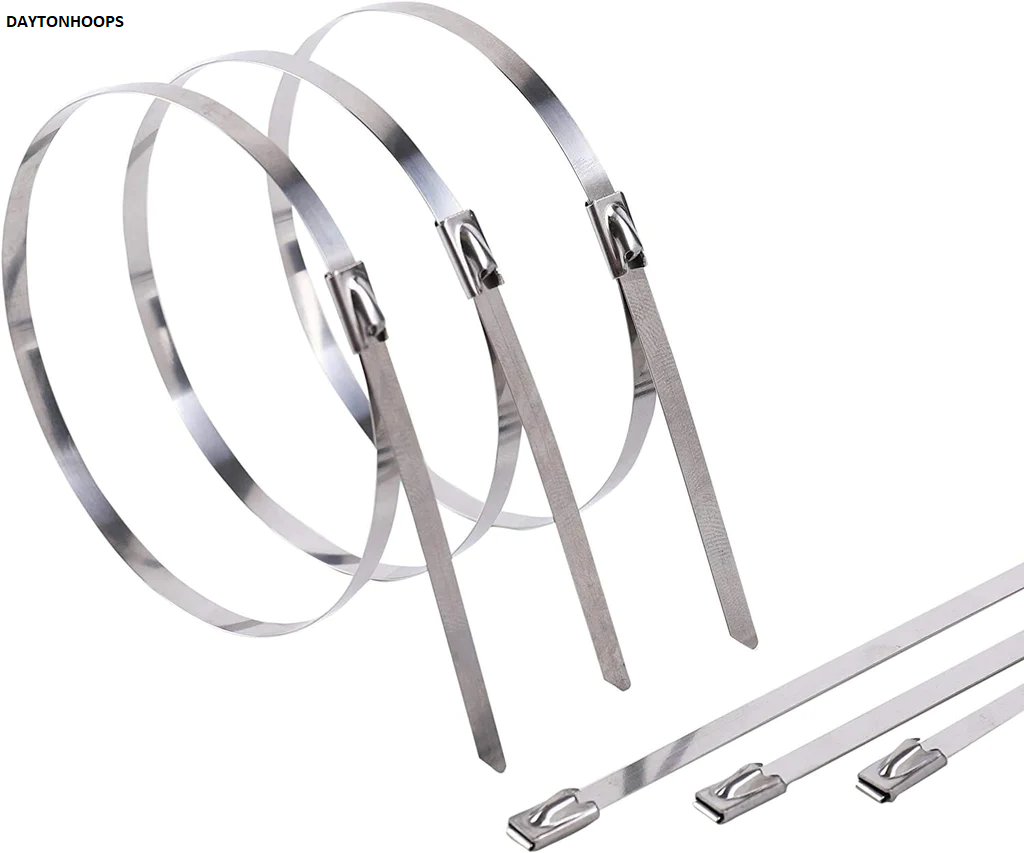In the realm of fastening solutions, stainless steel cable ties emerge as a paragon of durability and adaptability. These unassuming yet formidable tools play pivotal roles in various industrial, commercial, and domestic applications, showcasing an unparalleled ability to withstand harsh environments while providing reliable, secure binding. This article delves into the multifaceted world of stainless steel cable ties, exploring their composition, benefits, applications, and selection criteria, thereby illuminating their indispensable value in modern infrastructure and technology.
Composition and Features
At the heart of stainless steel cable ties lies their robust material composition. Crafted from high-grade stainless steel, these ties are engineered for resilience, offering exceptional resistance to corrosion, heat, and UV exposure. This inherent durability makes them an ideal choice for applications in extreme conditions, where other materials might falter.
Durability and Resistance
The quintessence of stainless steel cable ties’ appeal is their impressive durability. Stainless steel, an alloy of iron, carbon, and chromium, provides these ties with a protective layer that resists rust and corrosion. This characteristic is crucial for outdoor applications or environments with high moisture or chemical exposure, where the integrity of fastening solutions is paramount.
Heat and UV Resistance
Another notable feature of stainless steel cable ties is their ability to withstand extreme temperatures and UV radiation. This resilience extends their utility to industries and scenarios where exposure to high heat or prolonged sunlight is given, ensuring that they maintain their tensile strength and structural integrity over time.
Applications Across Industries
The versatility of stainless steel cable ties is evidenced by their widespread use across various sectors. From securing cables in telecommunications towers to fastening components in automotive manufacturing, these ties offer a reliable solution that meets the demands of diverse applications.
Telecommunications and Power Distribution
In the telecommunications and power distribution sectors, stainless steel cable ties are indispensable for organizing and securing cables and wires. Their strength and resistance to environmental factors ensure that critical infrastructure remains operational, even in adverse conditions.
Construction and Marine Applications
The construction and marine industries benefit from the robust nature of stainless steel cable ties. Their resistance to corrosion and saltwater makes them ideal for securing materials in coastal and marine environments, where traditional fastening solutions might degrade.
Automotive and Aerospace
The automotive and aerospace industries utilize stainless steel cable ties for their high tensile strength and durability. In these applications, ties must withstand vibrations, temperature fluctuations, and harsh chemicals, making stainless steel an optimal material choice.
Selection Criteria
Choosing the right stainless steel cable tie involves considering several key factors to ensure optimal performance in specific applications. These criteria include size, tensile strength, and type of locking mechanism, among others.
Size and Tensile Strength
The size and tensile strength of a cable tie determine its capacity to secure materials. Selecting a tie with appropriate length and width, along with a tensile strength suitable for the load it will bear, is crucial for effective and safe application.
Locking Mechanisms
Stainless steel cable ties come with various locking mechanisms, including ball-lock and self-locking designs. Each offers different levels of security and ease of installation, influencing their suitability for particular tasks.
Environmental Considerations
Finally, environmental factors play a significant role in selecting stainless steel cable ties. For applications exposed to harsh chemicals, extreme temperatures, or high levels of UV radiation, choosing ties specifically designed to withstand these conditions is essential for long-term reliability.
Advantages Over Other Materials
Stainless steel cable ties offer distinct advantages over ties made from other materials, such as nylon or plastic. Their superior strength, resistance to corrosion and heat, and longevity make them a more cost-effective and reliable choice in many scenarios.
Cost-Effectiveness and Longevity
While the initial cost of stainless steel cable ties may be higher than their plastic counterparts, their durability and resistance to environmental degradation translate into longer lifespans and fewer replacements, offering better value over time.
Environmental Sustainability
The durability and recyclability of stainless steel cable ties also contribute to their environmental sustainability. By reducing the need for frequent replacements, they minimize waste and resource consumption, aligning with eco-friendly practices and sustainability goals.
Conclusion
Stainless steel cable ties stand as a testament to the innovation and reliability that modern fastening solutions can offer. Their strength, versatility, and durability make them an invaluable asset in numerous applications, from the depths of the ocean to the heights of telecommunications towers. As industries continue to evolve and face new challenges, the adaptability and resilience of stainless steel cable ties will undoubtedly play a crucial role in shaping the future of infrastructure and technology. With careful selection and application, these ties not only secure materials but also ensure the integrity and longevity of critical systems across the globe.

